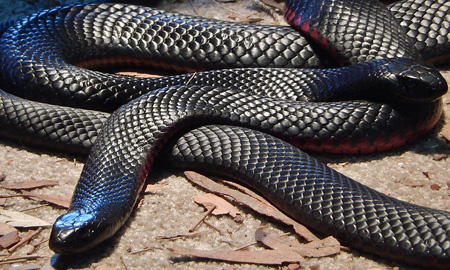Introduction
Tiger serpents (Notechis scutatus) are among one of the most fascinating yet feared reptiles found in Australia. With their striking look and potent poison, these serpents stimulate a mix of wonder and care. Observing tiger serpents in their natural environment can be an exciting experience for nature enthusiasts, wild animals professional photographers, and researchers alike. Nevertheless, it's vital to approach this endeavor with regard for the animal's environment and an understanding of precaution to avoid snake bites.
In this thorough overview, we'll discover just how to safely observe tiger snakes in their all-natural environment. We will certainly cover subjects varying from comprehending http://andrezuze296.lucialpiazzale.com/tiger-serpent-bites-signs-and-symptoms-therapy-and-first-aid-steps their habits and environments to first aid for snake attacks-- outfitting you with understanding to boost your experience while minimizing risks.
What is a Tiger Snake?
Tiger snakes are extremely venomous serpents belonging to Australia, specifically Tasmania and seaside regions. They are known for their distinct grouped pigmentation appearing like a tiger's stripes, which can vary from yellowish-brown to dark brownish and even black.
Physical Characteristics
Tiger snakes are medium to large-sized serpents that can grow up to 2 meters long. Their bodies are durable, and they have a wide head that is definitely broader than their necks.
Habitat Preferences of Tiger Snakes
These reptiles commonly inhabit marshes, tidewaters, and seaside regions but can also golden crown snake be located near freshwater sources like rivers and lakes. Recognizing where these serpents live is critical for any person looking to observe them safely.
Understanding Tiger Serpent Behavior
Are Tiger Snakes Venomous?
Yes, tiger serpents are amongst one of the most venomous snake varieties internationally. Their venom includes neurotoxins that can result in severe clinical difficulties if bitten.
Behavioral Traits
Tiger snakes are generally shy creatures; they favor to stay clear of human communication. However, they can come to be aggressive if threatened or collared.
Where Can You Discover Tiger Snakes?
Tiger Snake Habitat Exploration
To securely observe tiger serpents in their all-natural habitat, it's necessary initially to determine where they prosper. They have a tendency to favor:
- Coastal marshlands Mangroves Swamps Riverbanks
Best Places for Observation
Some suggested locations consist of:
- Tasmanian wetlands The shorelines of southern Australia National parks with water bodies
Safety Preventative measures Prior to Observing Tiger Snakes
Understanding the Threats of a Tiger Snake Bite
Although encounters with tiger serpents can be exhilarating, understanding the dangers involved is vital:
Recognize signs of a serpent bite: swelling at the site, discomfort emitting from the bite area. Know emergency situation contacts: Familiarize yourself with regional emergency services. Carry a first-aid package particularly geared up for serpent bites.First Aid for Serpent Bites: What You Required to Know
Knowing what actions to take if bitten could save your life or someone else's:

- Stay tranquility; motion increases poison spread. Call for medical aid immediately. Do not use ice or attempt suctioning.
How to Securely Observe Tiger Snakes in Their Natural Habitat
When you make a decision to observe tiger serpents in the wild:
Dress Appropriately: Put on lengthy trousers and strong boots. Use Binoculars: Keep a secure distance while observing these reptiles. Avoid Sudden Movements: Quick movements might shock them. Stay on Developed Trails: Avoid roaming right into dense underbrush where presence is low.Equipment Needed for Observation
Essential Equipment Checklist
- Binoculars First-aid set particularly developed for snake bites Field guidebook on Australian reptiles Camera (with zoom ability)
Snake Bite First Aid Kit Essentials
A well-equipped first aid kit need to consist of:|Item|Function|| -------------------------------|-------------------------------|| Compression bandage|To debilitate the affected area|| Antihistamines|For allergic reactions|| Emergency get in touch with numbers|Quick access throughout emergency situations|
Interpreting Tiger Snake Signals
Understanding just how tiger serpents connect with body movement helps viewers assess when it's safe or hazardous:
Common Behaviors
Defensive stance: If coiled or elevated off the ground. Retreating actions: When they slowly retreat from possible threats.Dealing With Potential Encounters
Even with precautions taken, an encounter may still occur throughout your observation journey:

Frequently Asked Concerns Regarding Tiger Snakes
1. What should I do if I see a tiger snake?
Remain calm; observe from a distance without troubling it.

2. Are infant tiger snakes dangerous?
Yes, adolescent tiger serpents are birthed poisonous and might posture risks comparable to grownups despite being smaller.
3. Exactly how common are tiger serpent bites?
While cases happen yearly in Australia, casualties are unusual due to timely treatment availability.
4. Can I maintain a tiger serpent as a pet?
Keeping wild tiger serpents as animals is prohibited in lots of regions as a result of conservation laws.
5. What does a tiger snake bite appearance like?
Bite marks generally show 2 puncture wounds in addition to localized swelling and discoloration.
6. How effective is antivenom?
Antivenom therapy is highly effective when administered prompt after a bite.
Conclusion
Observing tiger serpents in their natural environment provides an exhilarating possibility for wild animals lovers however need to be approached with care and respect for both the animal and its setting. By equipping on your own with knowledge about these interesting reptiles-- including comprehending their habits and safety measures-- you can delight first aid for snake bites in memorable experiences while considerably reducing threats related to encounters.
In summary, always focus on safety and security by preparing appropriately before starting any type of wildlife observation exploration-- especially when taking care of some of nature's most poisonous creatures like the tiger snake!